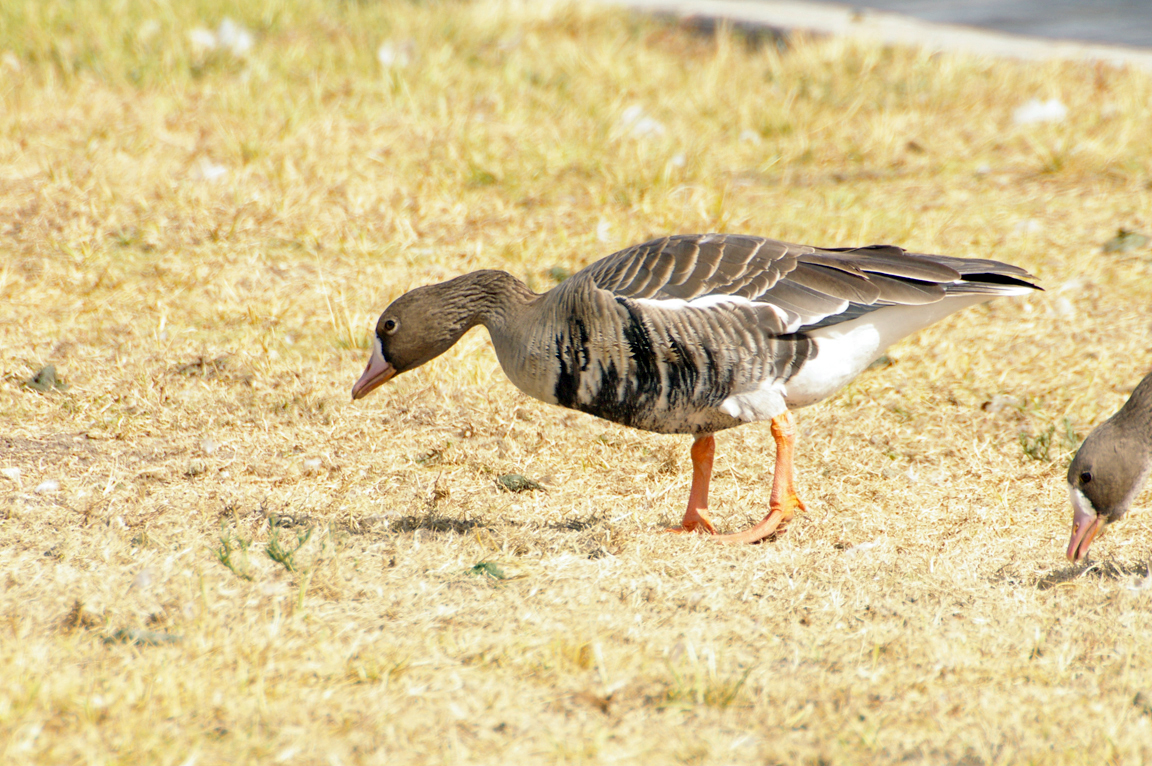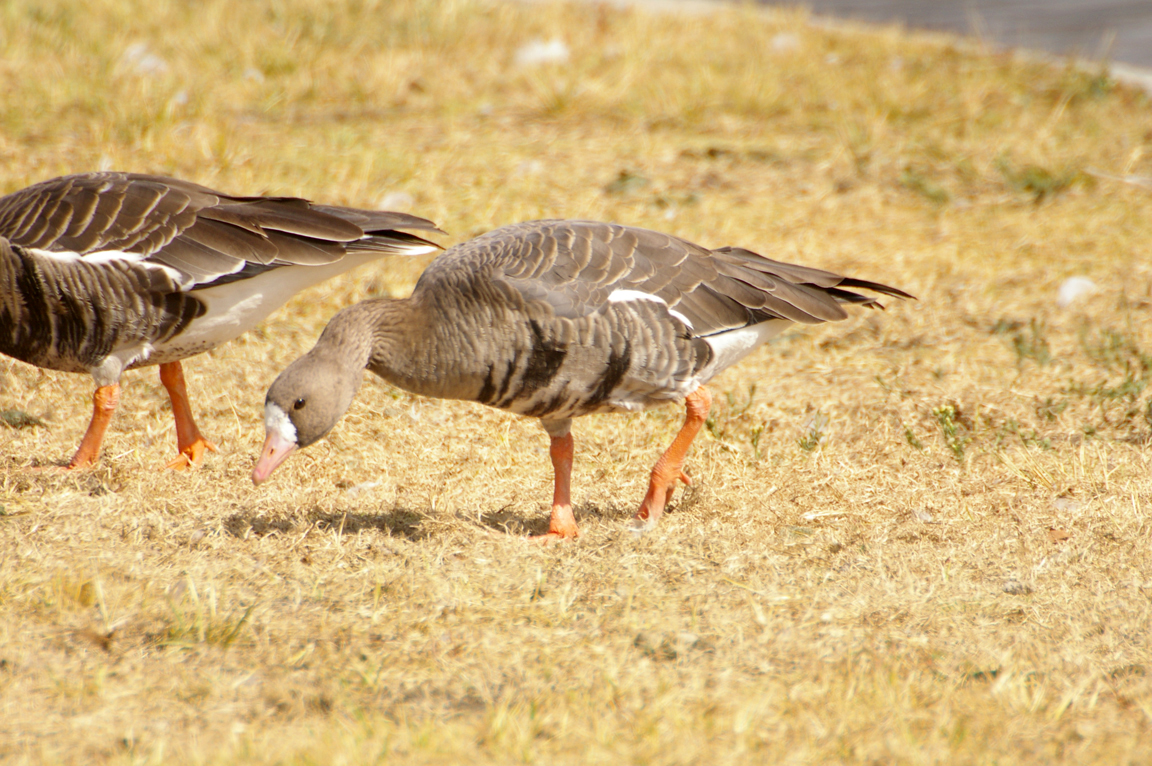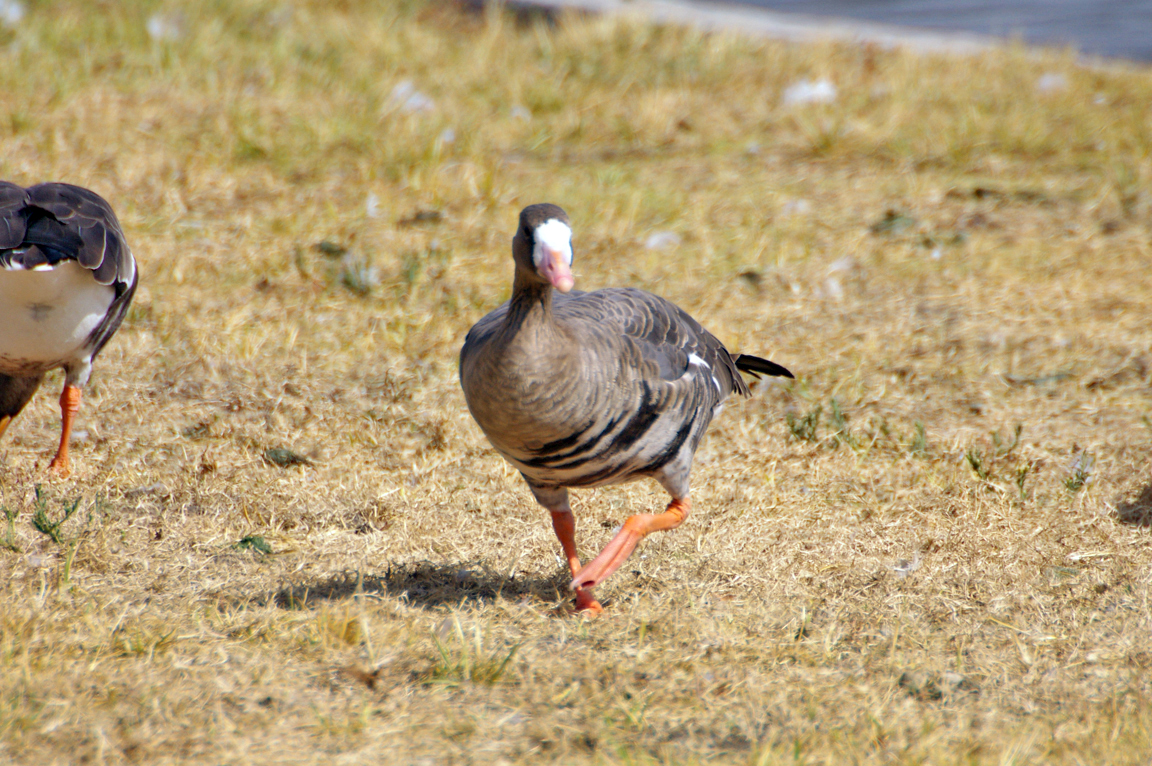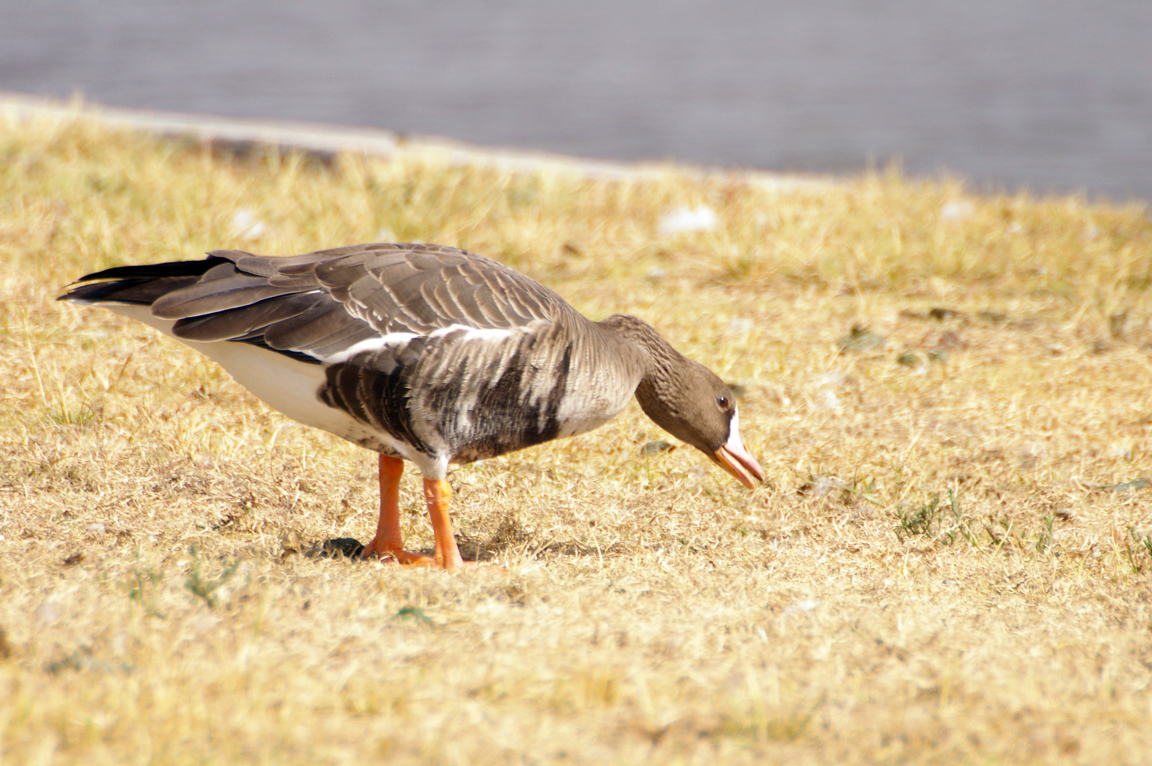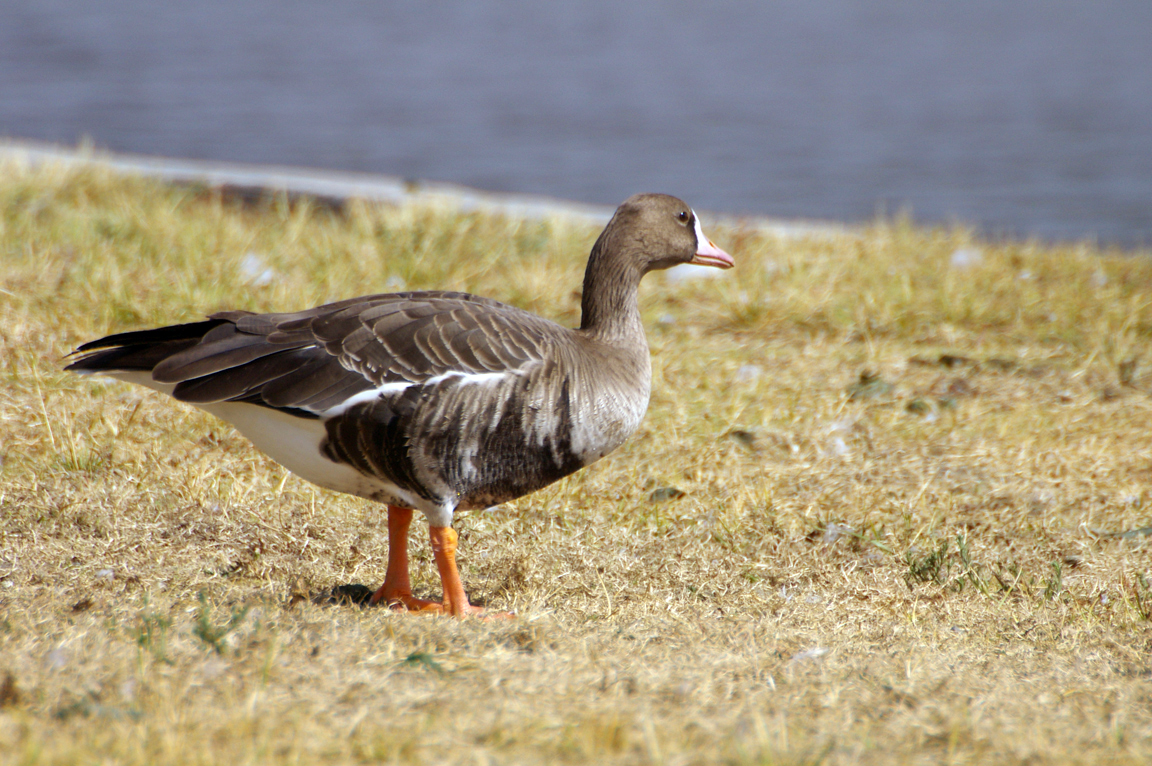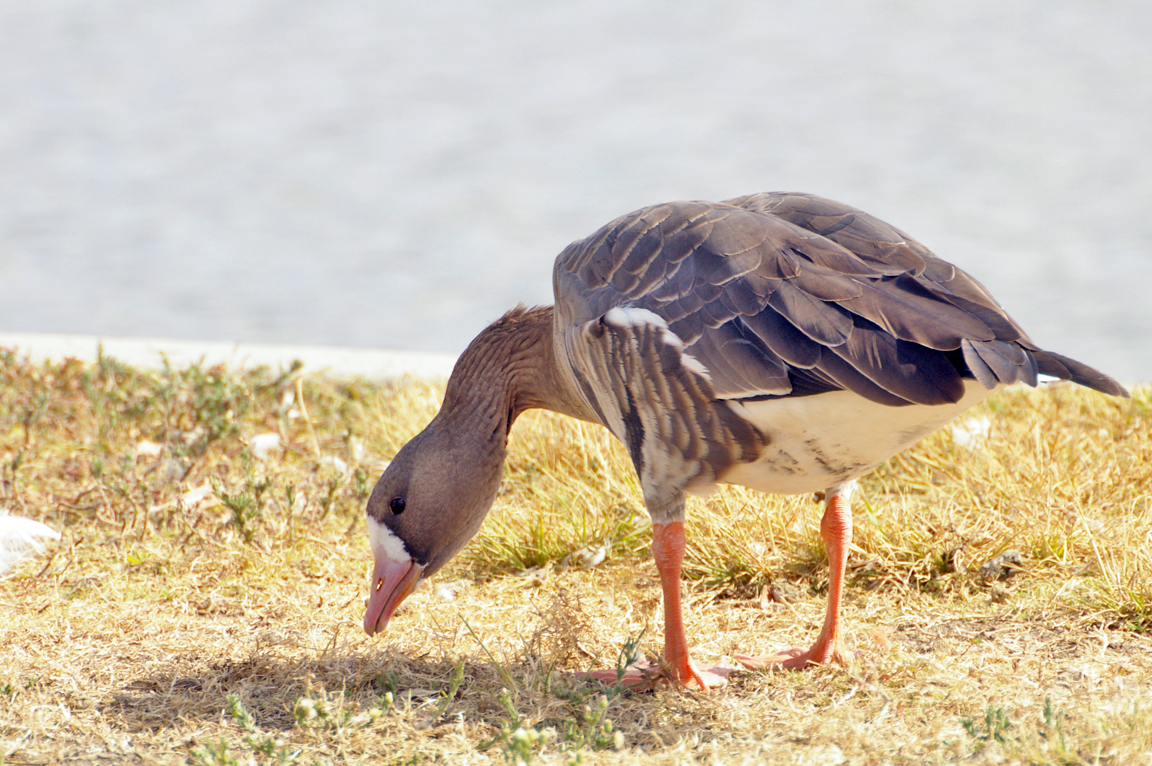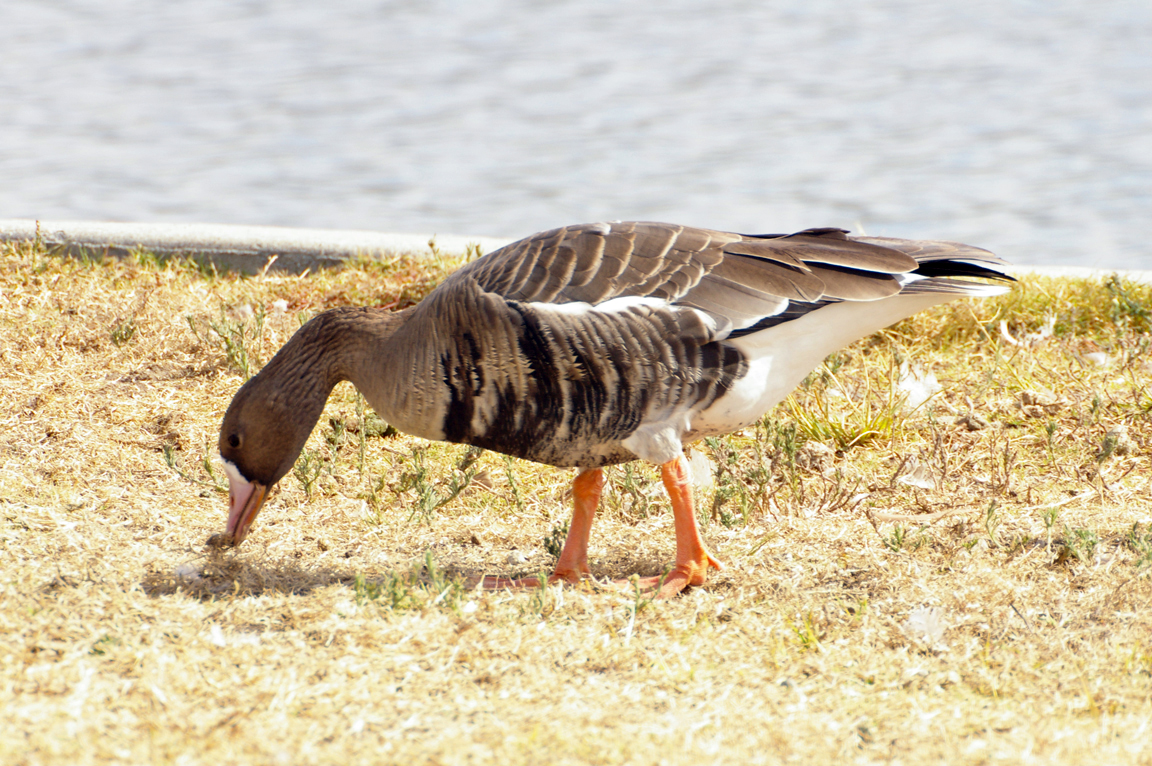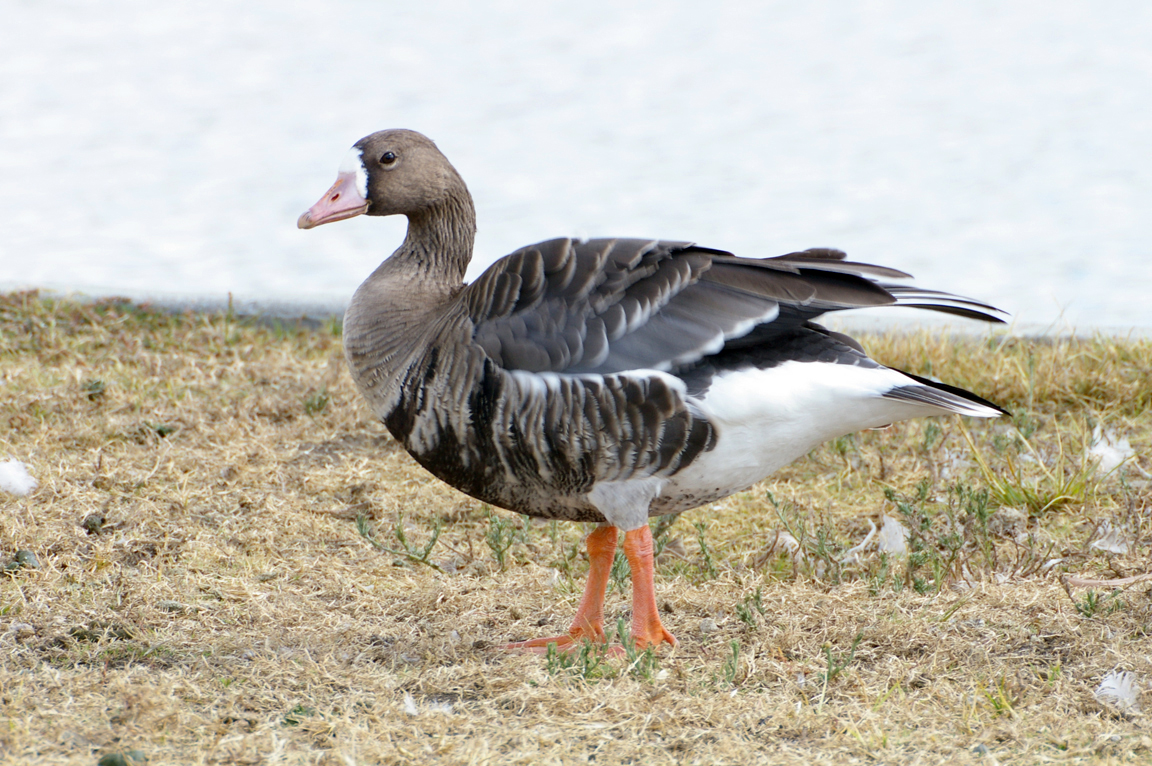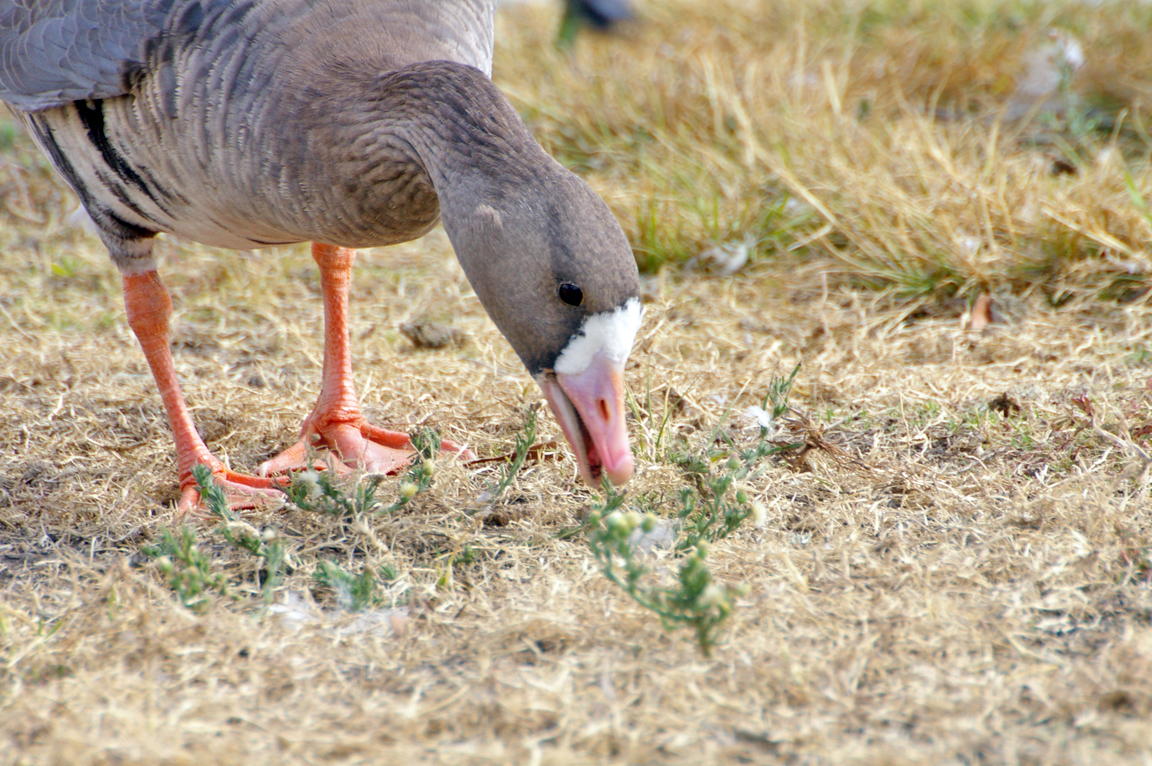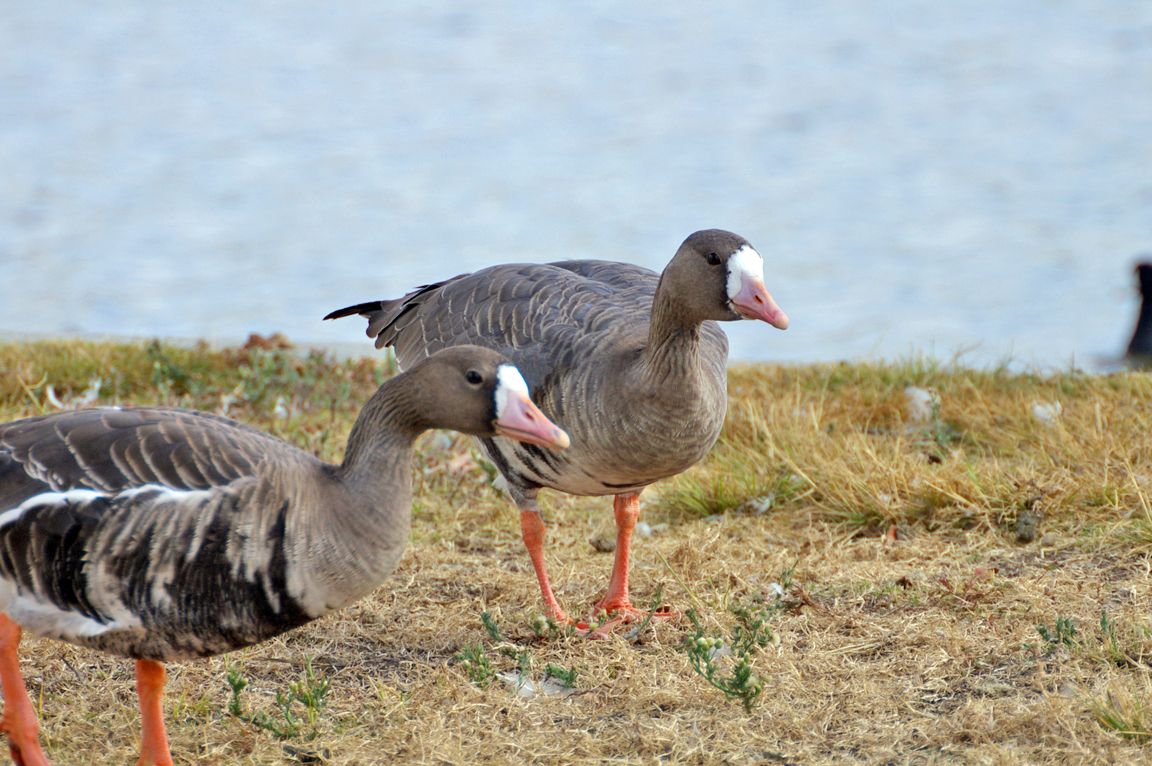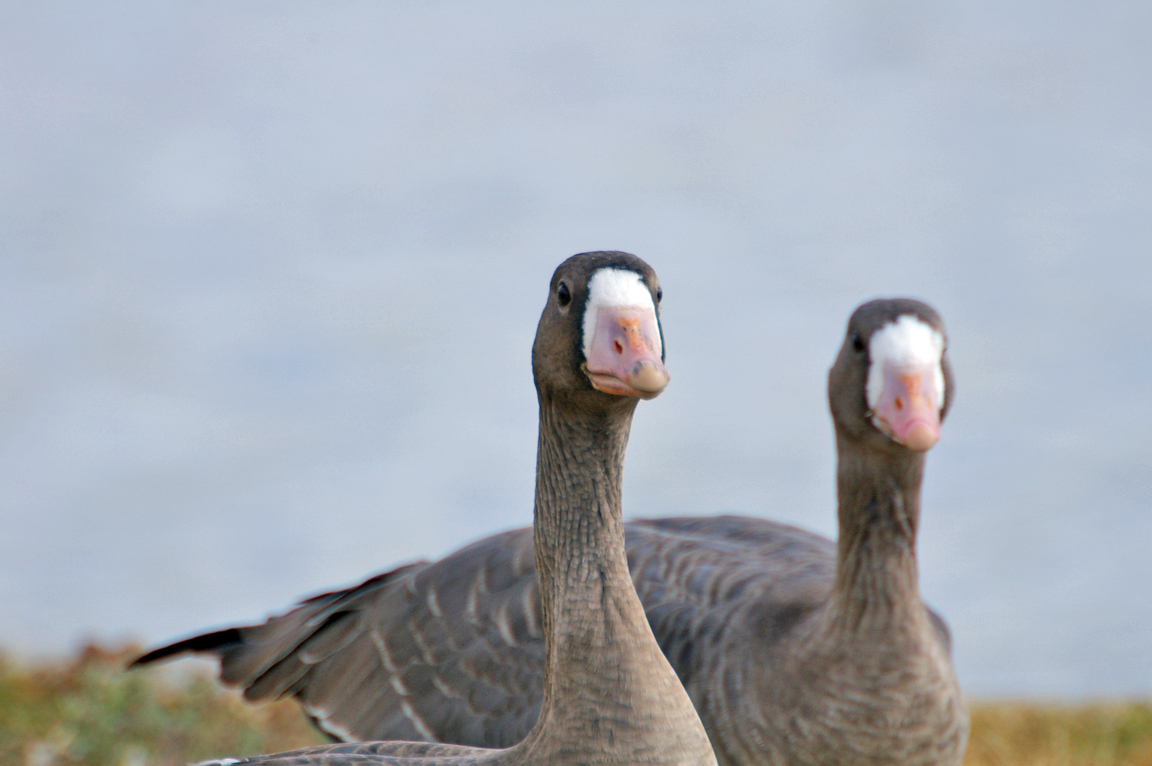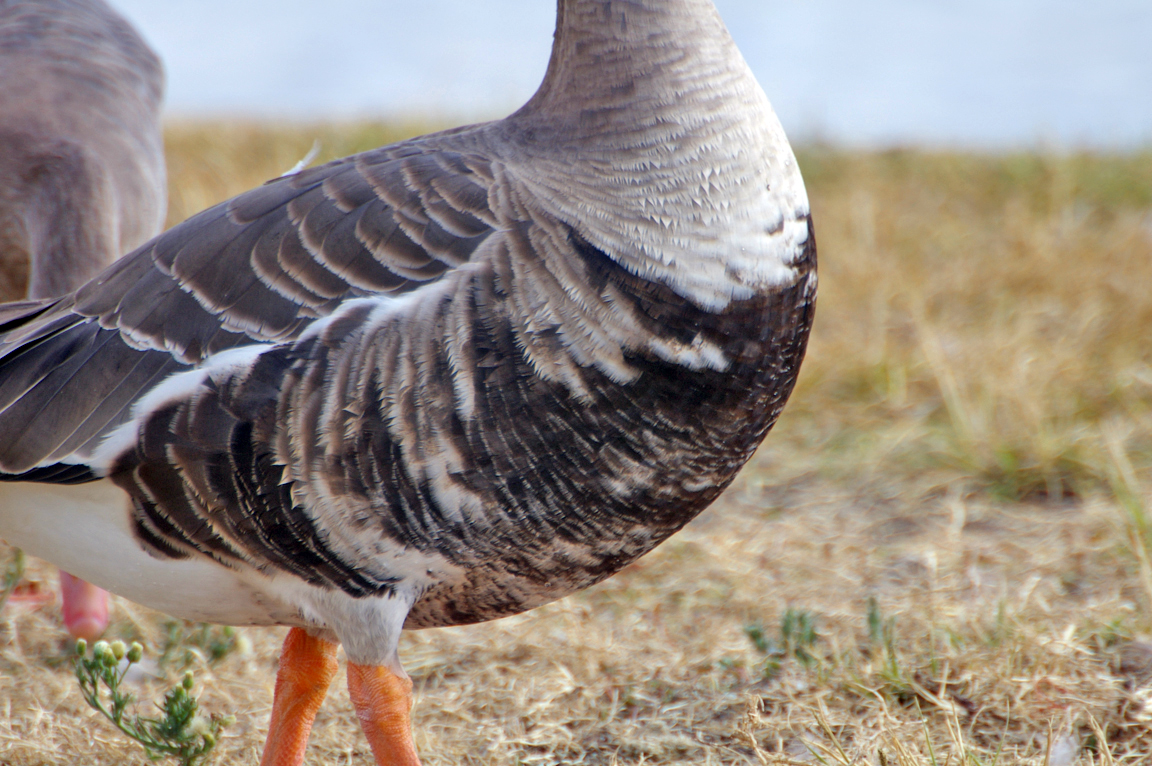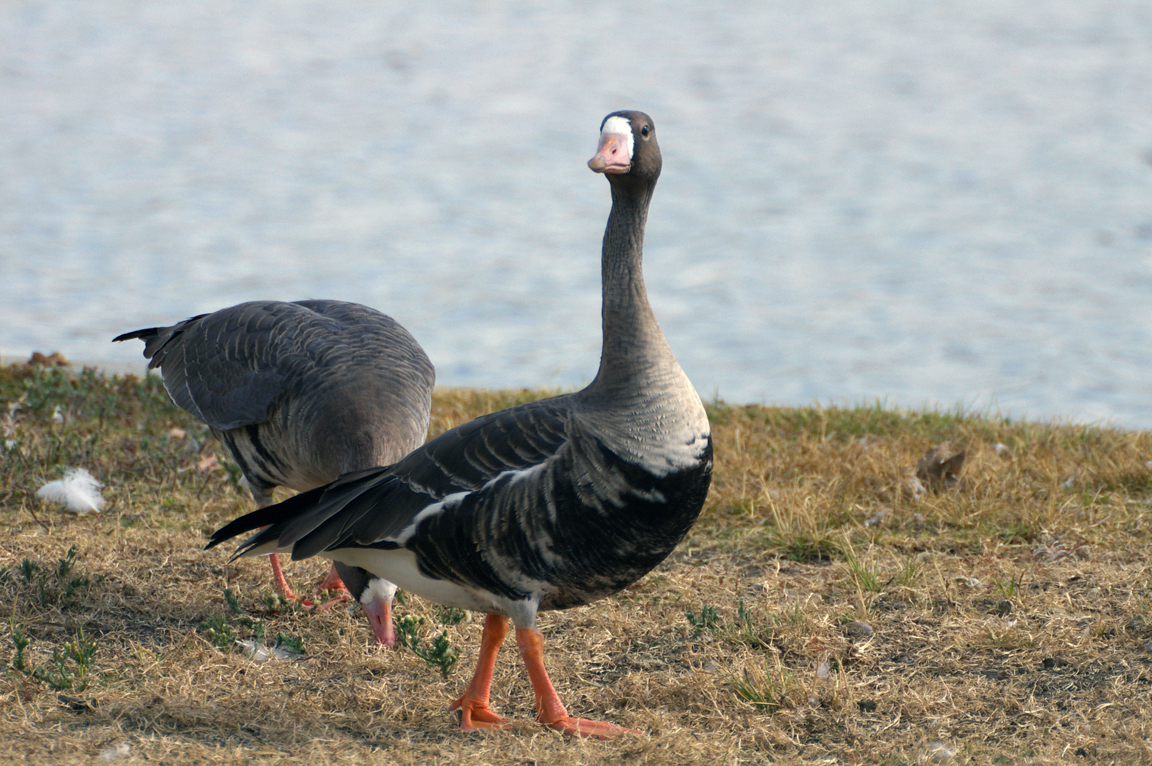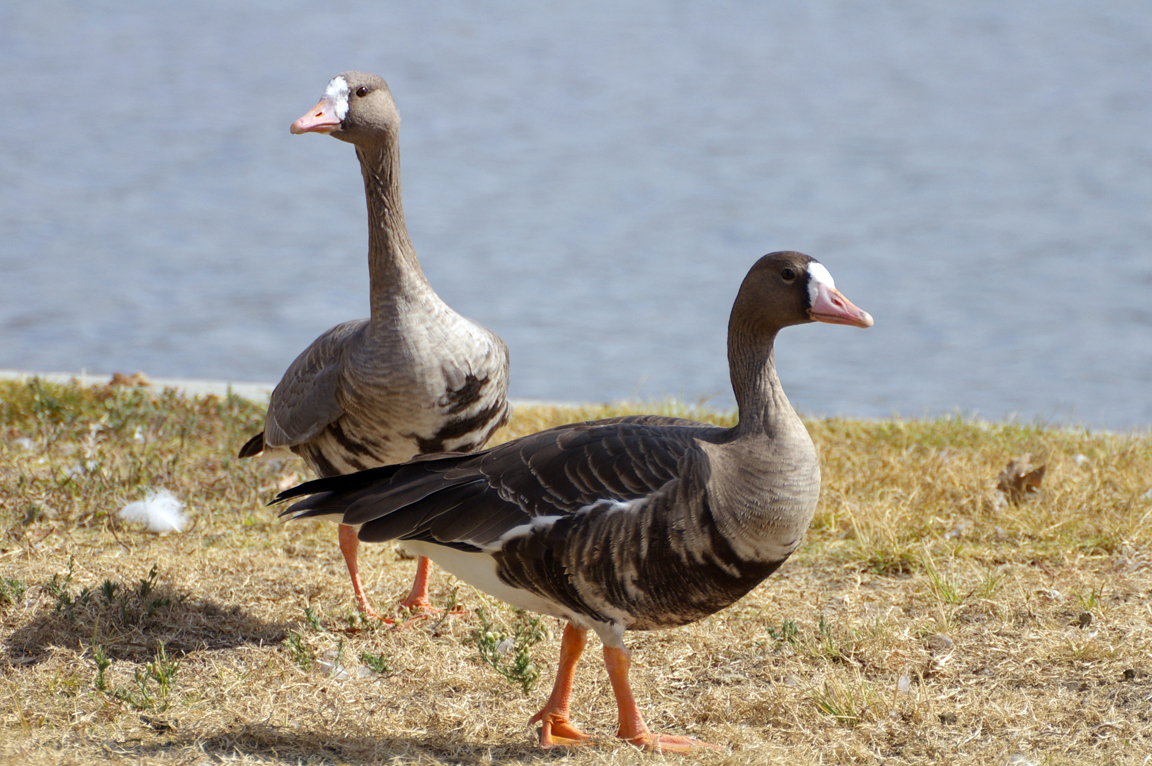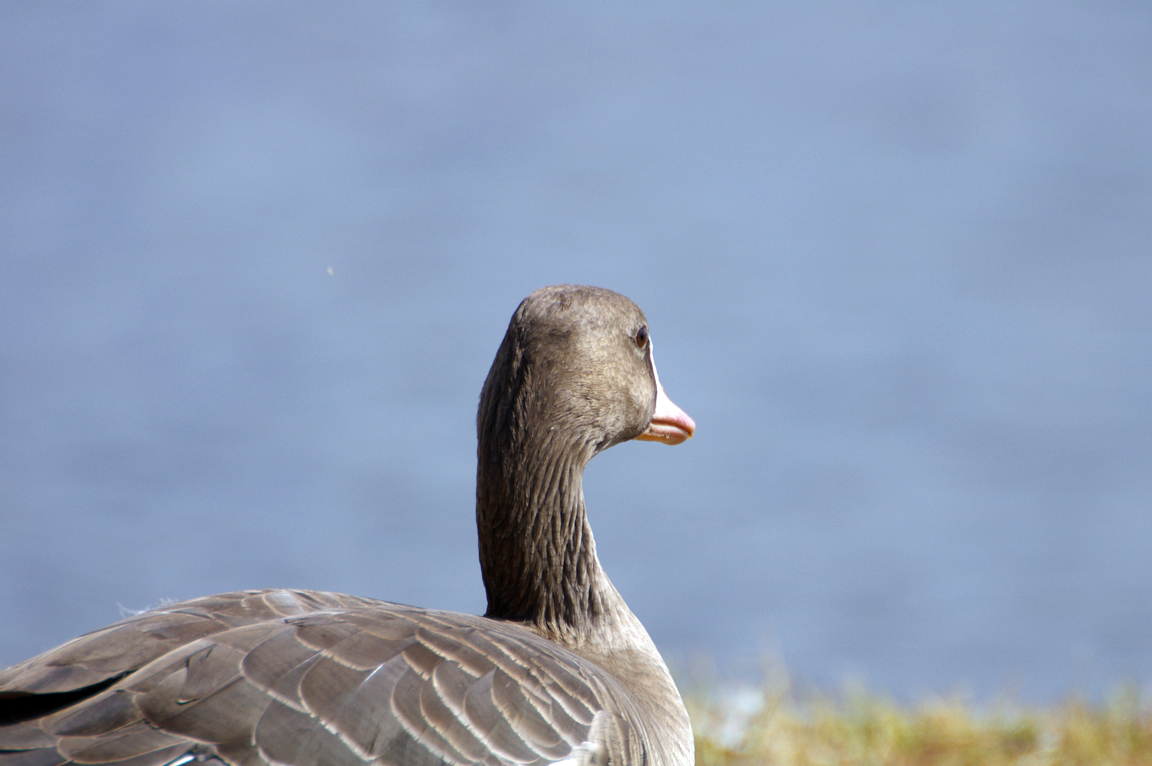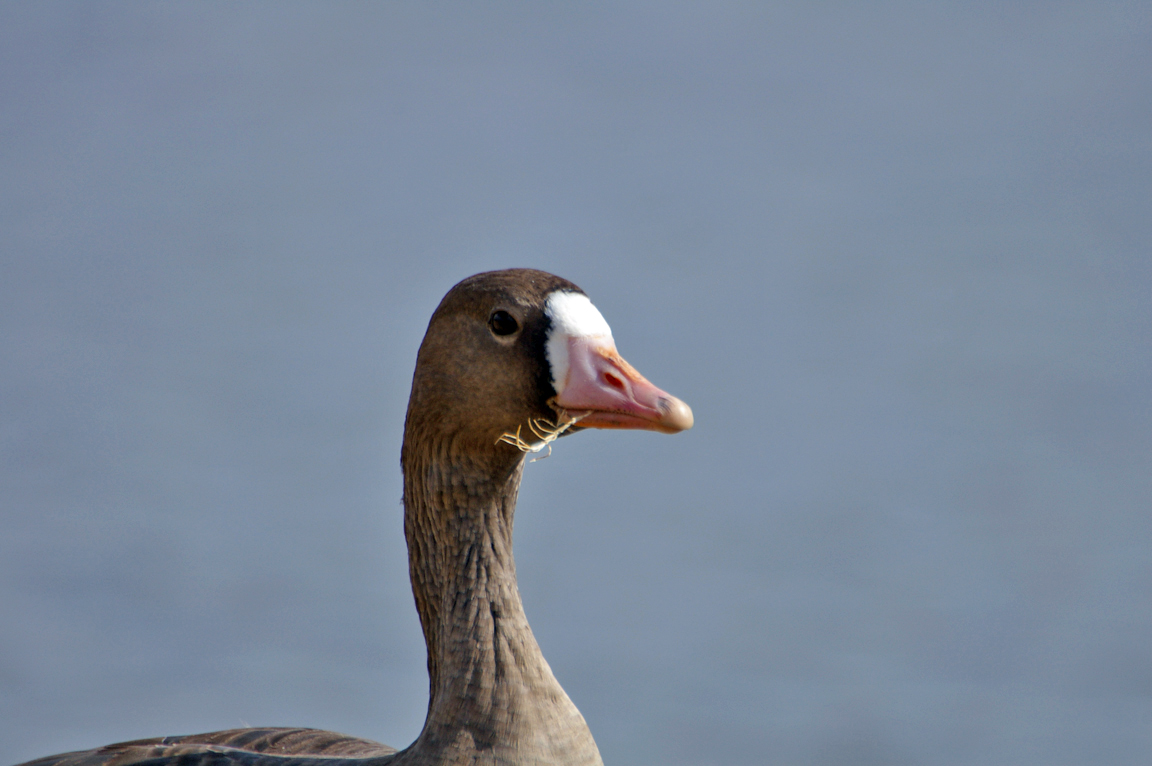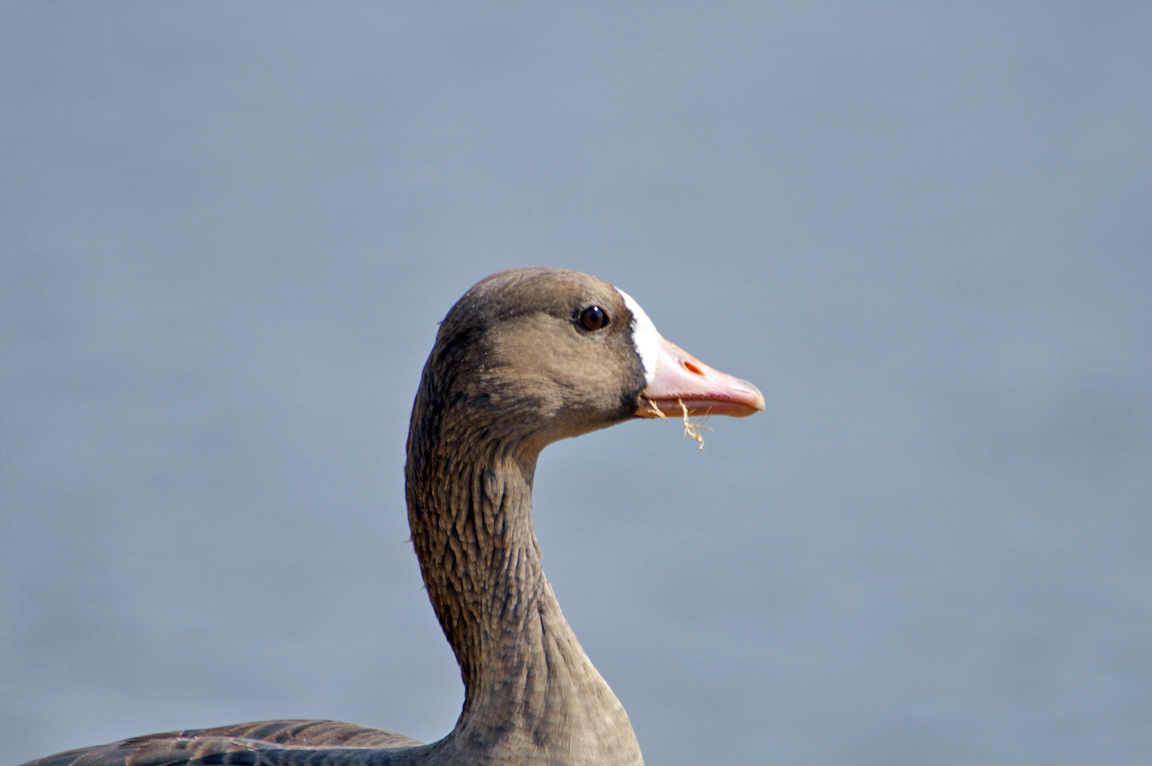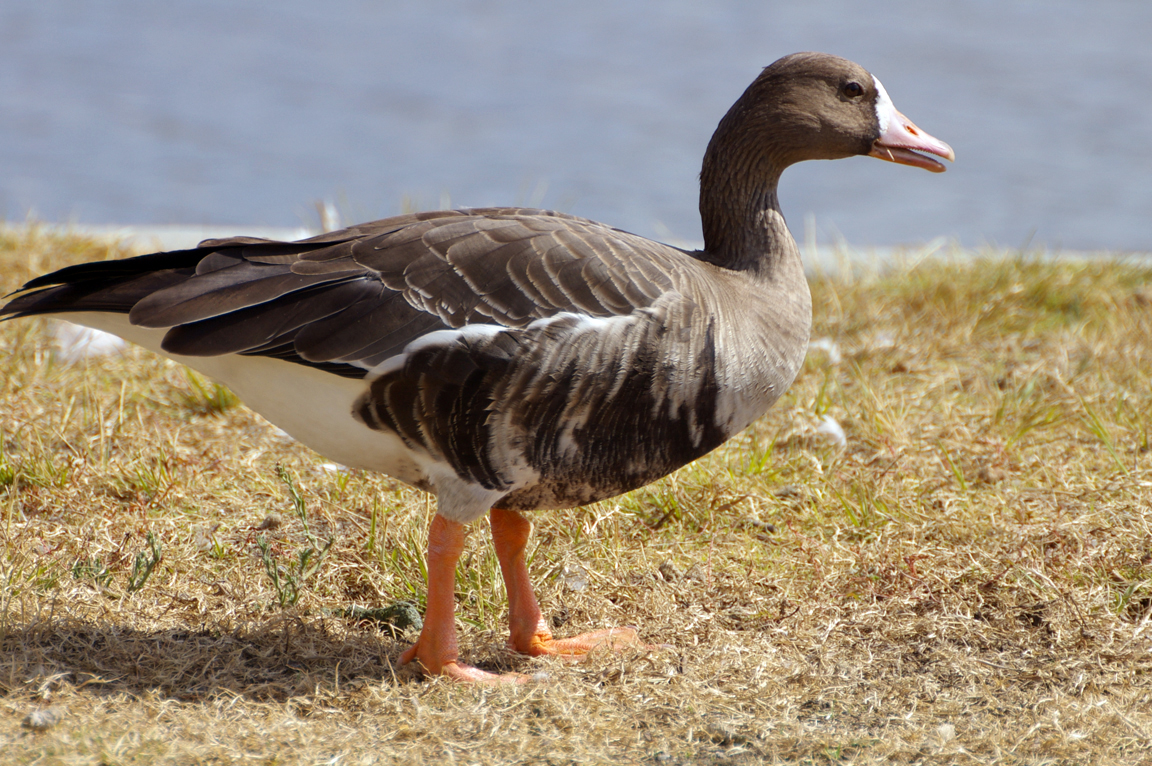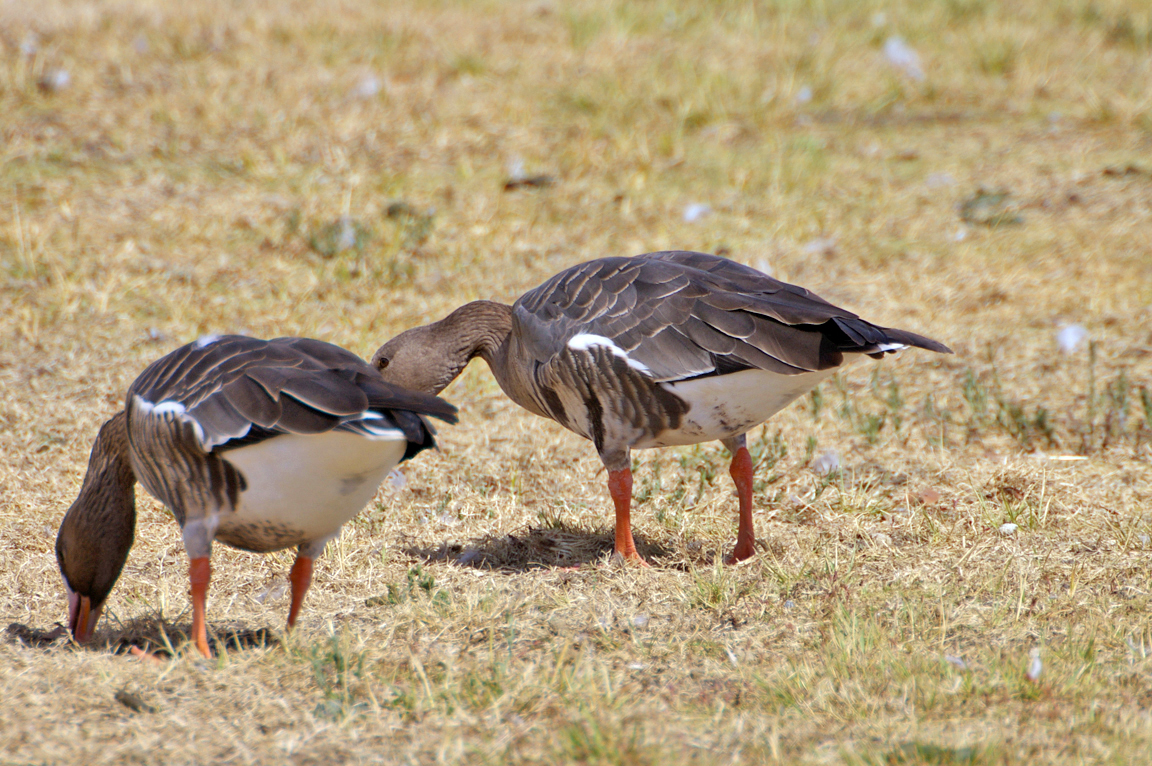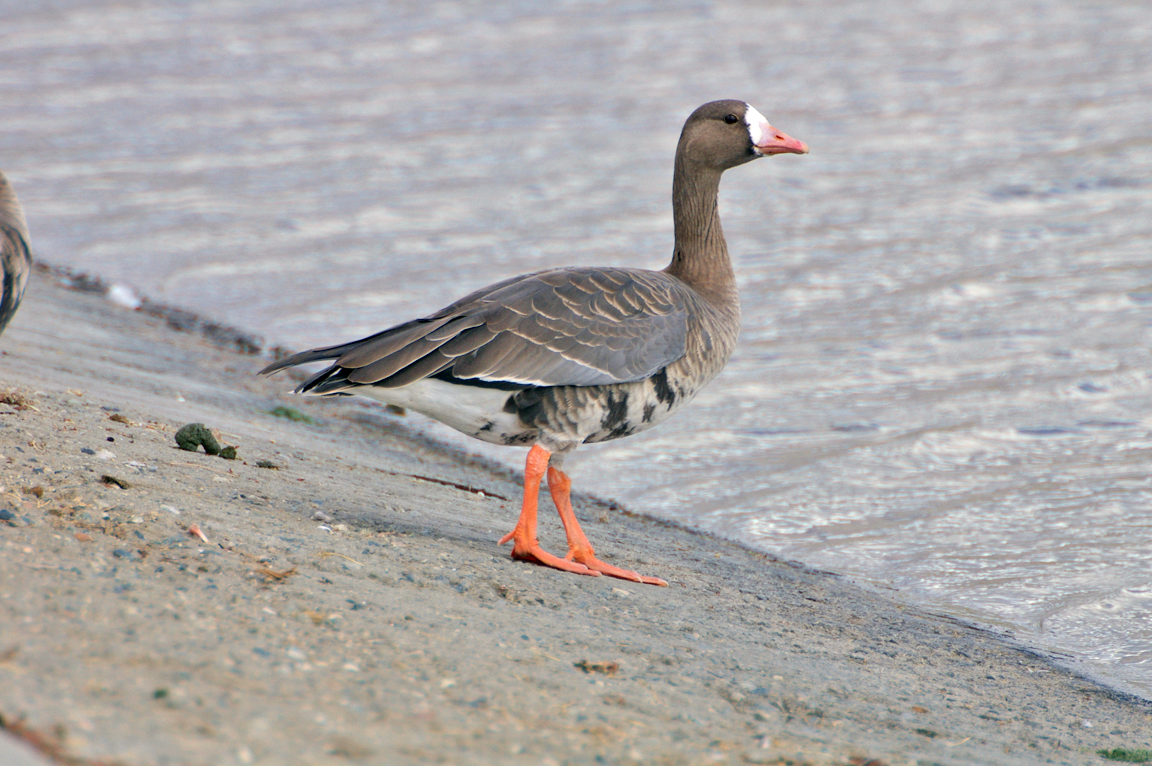|
|
|
 |
Greater White-fronted Goose
|
| Anser albifrons | |
Breeding across the tundra from Nunavut to Siberia, across Russia, and in Greenland, the Greater White-fronted Goose has one of the largest ranges of any species of goose in the world. In North America, however, it is common only west of the Mississippi River, where it is found in large flocks in wetlands and croplands.
Interesting Information
-
The Tule goose is a large, dark subspecies of the Greater White-fronted Goose. This form breeds just around Cook Inlet in Alaska, and numbers only about 7,500. It winters in the Sacramento Valley of California, where it meets the more widespread subspecies. The Tule goose uses primarily marshes while the other form forages in open fields.
-
As is true of many geese, Greater White-fronted Goose pairs stay together for years and migrate together, along with their offspring. White-front family bonds can last longer than in most geese, and some young stay with their parents through the next breeding season. Parent and sibling associations may continue throughout their lives.
-
A smaller, but very similar goose is found in northern Asia and Europe. It is known as the Lesser White-fronted Goose and is the reason our goose is known as the "Greater." Dwarf species seem to have appeared repeatedly in geese. Other similar pairs are the Ross's and Snow geese and Cackling and Canada geese.
-
The Greater White-fronted Goose subspecies that breeds in Greenland usually winters in Ireland and Scotland. It occasionally turns up on the East Coast of North America. It is slightly larger than the typical American form, and has a brighter orange (less pink) bill, but telling them apart definitively is difficult.
Description
Adult Description
-
Medium-sized goose.
-
Body gray-brown.
-
Forehead and base of bill white.
-
Bill pinkish or orange.
-
Variable amount of black mottling on belly.
-
Length Range: 66-86 cm (26-34 in)
-
Weight: 3599 g (126.98 oz)
-
Size: Large (16 - 32 in)
-
Color Primary: Brown
-
Underparts: Dark gray-brown, with heavy mottling and barring.
-
Upperparts: Dark gray-brown
-
Back Pattern: Barred or banded
-
Belly Pattern: Barred or banded, Scaled or scalloped
-
Breast Pattern: Barred or banded, Scaled or scalloped
Sex Differences
Sexes similar.
Immature
Slightly smaller and lighter than adult. Lacks white forehead and black belly marks. Bill light pinkish. Legs yellow-orange
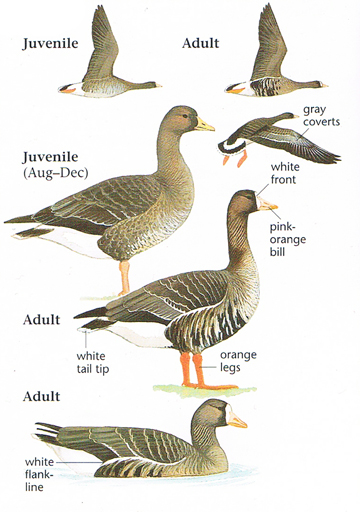
Photo taken from: The Sibley Field Guide by David Allen Sibley
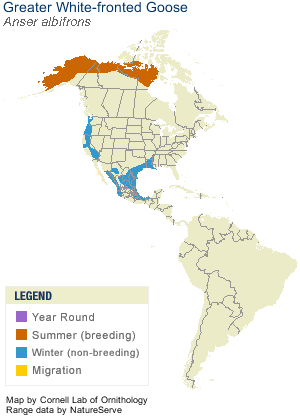
© 2003 Cornell Lab of Ornithology
|
Habitat |
|
Breeds along tundra wetlands. Winters in agricultural fields, marshes, bays, and lakes. |
|
Behavior |
|
Gleans grain from fields, grazes on grass, forages in shallow water by tipping-up. |
|
Food |
|
Seeds, grain, grasses, sedges, berries. |
Taxonomy
| Kingdom: | Animalia |
| Phylum: | Chordata |
| Subphylum: | Vertebrata |
| Class: | Aves |
| Order: | Anseriformes |
| Family: | Anatidae |
| Subfamily: | Anserinae |
| Genus: | Anser |
| Species: | Anser albifrons |
| Subspecies: | Anser albifrons albifrons |
| Anser albifrons elgasi | |
| Anser albifrons flavirostris | |
| Anser albifrons frontalis | |
| Anser albifrons gambeli |
Similar Species |
|
|
Bird Sound |
|
Call a high-pitched laughing or yelping, consisting of two or three notes. |
|
Eggs look like this |
|
Photo taken from: ARCTOS Collaborative Collection Management Solution |
